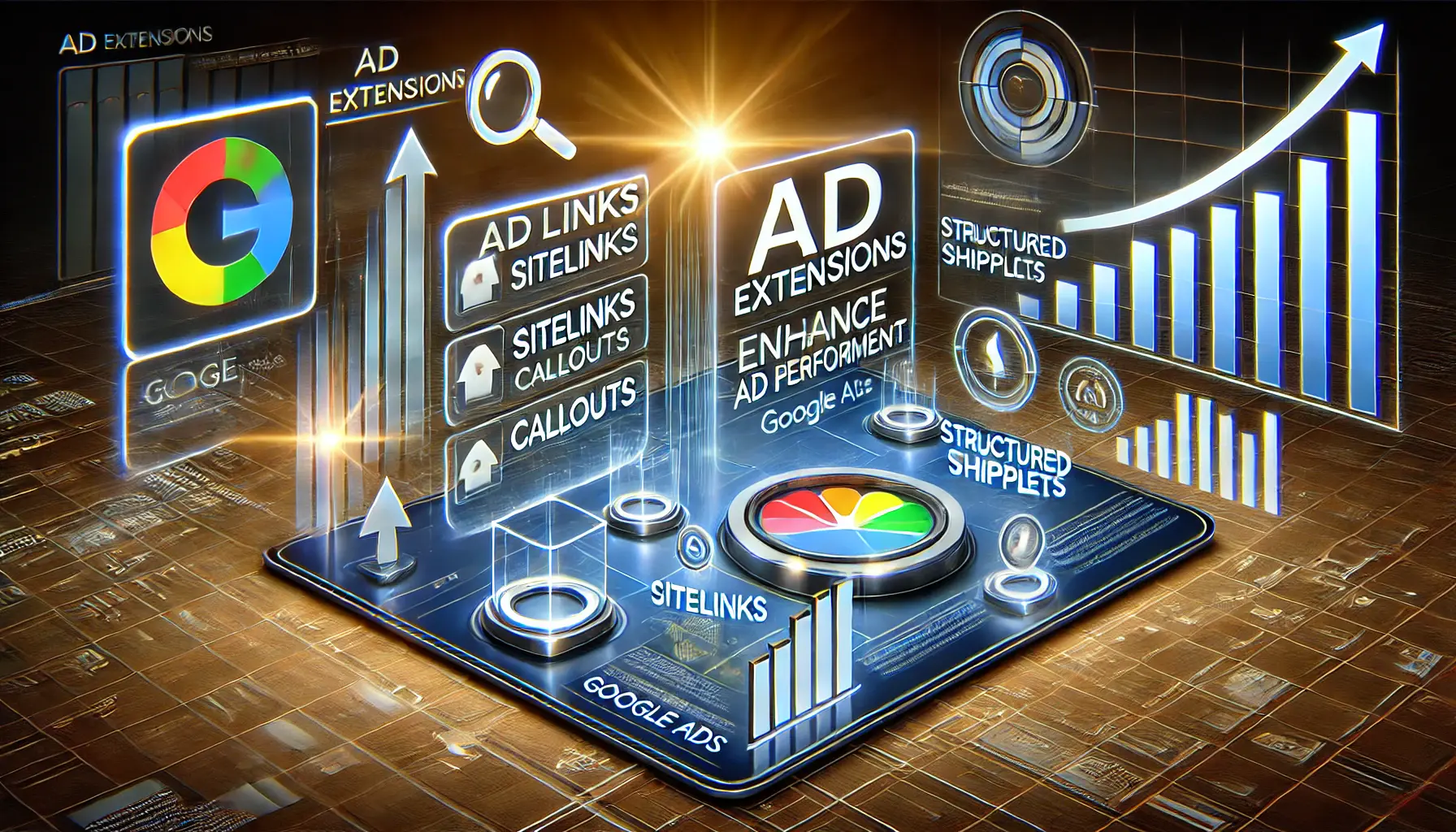One needs to move along with the tide in constantly changing digital marketing.
Among the most effective tools at your disposal are Google’s Responsive Search Ads.
These ads adapt and deliver the most relevant messages to potential customers, improving engagement and boosting campaign performance.
Responsive Search Ads represent a big step up in online advertising.
By allowing you to input multiple headlines and descriptions, Google automatically tests different combinations to determine which perform best.
This dynamic approach ensures your ads resonate with a broader audience, ultimately driving more clicks and conversions.
Understanding Responsive Search Ads in Google Ads
Responsive Search Ads are a versatile ad format within Google Ads that enable advertisers to create flexible ads tailored to match user search queries.
By allowing for up to 15 headlines and 4 descriptions, Google’s system uses machine learningA method of data analysis that automates analytical model building using algorithms and statistical models. to mix and match these components, showing users the most effective ad combinations.
So, how do Responsive Search Ads work?
When you create an RSA, you write multiple headlines and a few descriptions.
Google’s system takes these elements and creates various combinations, rotating them over time to determine which combinations provide the best outcome.
This enables your ads to adapt to different search queries, devices, and user contexts, increasing their relevance and efficiency.
The benefits of using Responsive Search Ads are many:
- Increased Flexibility: RSAs automatically adjust to various device widths, ensuring your message comes across properly on any device.
- Improved Reach: With more headlines and descriptions, the ads can enter more auctions and match more search queries, thereby reaching a larger audience.
- Better Performance: Using machine learning, RSAs optimize ad combinations to increase click-through rates and conversions.
- Time-Saving: You don’t need to create multiple ad variations; RSAs handle this automatically, saving you significant time and effort.
From my experience, Responsive Search Ads have simplified the ad creation process and considerably improved campaign performance.
Embracing this innovative ad format will help you push your digital marketing to its limits and achieve greater success in advertising.
Responsive Search Ads adapt dynamically to user search queries, ensuring relevance and efficiency through Google’s machine learning.

Illustration of the process of creating and optimizing responsive search ads using a sleek digital interface.
Setting Up Effective Responsive Search Ads
Creating impactful Responsive Search Ads (RSAs) involves strategic planning and thoughtful execution.
By following best practices, you can enhance ad performance and achieve your marketing objectives.

A vibrant depiction of crafting compelling ad content with creative tools and strategic elements.
Crafting Compelling Headlines and Descriptions
Developing engaging headlines and descriptions is crucial for capturing user attention.
Consider the following tips:
- Utilize Multiple Headlines and Descriptions: Provide up to 15 unique headlines and 4 distinct descriptions to allow Google’s system to test various combinations and identify top performers.
- Incorporate Relevant Keywords: Include popular keywords in your headlines to increase ad relevance and improve performance.
- Highlight Unique Selling Points: Emphasize what sets your product or service apart to attract potential customers.
- Vary Headline Lengths: Create headlines of different lengths to ensure optimal display across various devices and ad placements.

A depiction of leveraging keywords strategically to enhance ad performance in digital campaigns.
Utilizing Keywords Strategically
Effective keyword integration enhances ad relevance and reach:
- Include Keywords in Headlines: Ensure that at least two of your headlines contain target keywords to align with user search intent.
- Avoid Keyword Overuse: While it’s important to include keywords, ensure that at least three headlines do not contain them to prevent redundancy and maintain ad diversity.
- Employ Dynamic Keyword Insertion: Use this feature to automatically insert the user’s search query into your ad, increasing relevance and engagement.

A visualization of using ad extensions to boost engagement and performance in digital marketing campaigns.
Implementing Ad Extensions for Enhanced Performance
Ad extensions provide additional information and can improve click-through rates:
- Utilize All Relevant Extensions: Implement extensions such as sitelinks, callouts, and structured snippets to provide users with more reasons to engage with your ad.
- Incorporate Image Assets: Adding images can make your ads more engaging and informative, potentially leading to higher conversion rates.
- Monitor Extension Performance: Regularly review the effectiveness of your ad extensions and adjust them as needed to optimize results.
By focusing on these strategies, you can set up Responsive Search Ads that are not only effective but also adaptable to the dynamic nature of user search behavior, ultimately driving better performance for your campaigns.
Maximize RSA performance by using diverse headlines and descriptions while focusing on relevant keywords and unique selling points.

A depiction of optimizing responsive search ads with machine learning and automated bidding strategies.
How to Optimize Responsive Search Ads
Improving the efficiency of Responsive Search Ads (RSAs) requires a strategic approach and adherence to proven best practices.
By implementing the following strategies, you can maximize the effectiveness of your RSAs and achieve your advertising goals.

Visual representation of diversifying ad copy variations in responsive search ads for optimization.
Diversifying Ad Copy Variations
Providing a diverse set of ad copy variations allows Google’s machine learning algorithms to identify the best-performing combinations.
Consider the following:
- Maximize Headlines and Descriptions: Use up to 15 unique headlines and 4 different descriptions to create more combinations. This increases the chances of the system choosing an ad combination that closely matches a wider variety of search queries.
- Ensure Uniqueness: Each headline and description should convey different messages or value propositions, avoiding repetition. This approach increases the likelihood of engaging diverse audience segments.
- Incorporate Keywords Thoughtfully: Integrate relevant keywords naturally into your headlines and descriptions to improve ad relevance without compromising readability.

Visual representation of monitoring and improving ad strength in Google Ads through performance metrics and optimization.
Monitoring and Improving Ad Strength
Ad Strength is a metric that evaluates the relevance, quantity, and diversity of your ad content.
To improve Ad StrengthA Google Ads metric that evaluates the quality, relevance, and diversity of your Responsive Search Ad content.:
- Aim for ‘Excellent’ Ad Strength: Try to achieve an ‘Excellent’ rating by providing a diverse set of high-quality ad assets. Advertisers who improve Ad Strength from ‘Poor’ to ‘Excellent’ see 12% more conversions on average.
- Utilize Automatically Created Assets: Opt into automatically created assets to enhance ad relevance and performance.
- Regularly Review Ad Performance: Continuously monitor your ads and make necessary adjustments to maintain or improve Ad Strength over time.

Visual representation of leveraging Google’s machine learning to optimize ad components in digital marketing.
Leveraging Google’s Machine Learning for Ad Optimization
Utilizing Google’s machine learning capabilities can significantly enhance ad performance:
- Implement Smart Bidding Strategies: Use automated bidding strategies that leverage AI to optimize for conversions or conversion value, aligning bids with your campaign goals.
- Adopt Broad Match Keywords: Employ broad match keywords in conjunction with Smart Bidding to expand reach and capture relevant search queries, enhancing ad visibility.
- Embrace Automation and Dynamic Content: Allow Google’s AI to dynamically adjust ad components in real time, ensuring your ads remain relevant to user search intent and context.
By implementing these best practices, you can optimize your Responsive Search Ads to deliver more personalized and effective advertising experiences, ultimately driving better results for your campaigns.
Optimize your RSAs by diversifying ad copy, improving ad strength, and leveraging Google’s machine learning for better results.

Visual representation of successful case studies using responsive search ads, with indicators of increased traffic, CTR, and conversions.
Case Studies: Success with Responsive Search Ads
Implementing Responsive Search Ads (RSAs) has led to significant improvements in campaign performance across various industries.
Let’s explore some real-world examples that highlight the effectiveness of RSAs.

Representation of e-commerce success with a 258% increase in traffic, showing growth metrics and data visualizations.
E-commerce Brand Increases Traffic by 258%
An e-commerce company aimed to enhance its online presence and drive more traffic to its website.
By switching to broad match keywordsKeywords in Google Ads that allow ads to show for search terms related to the keyword, including synonyms and variations. from broad match modifier keywords in their RSA campaigns, they achieved phenomenal results:
- Traffic Growth: Website traffic increased by 258%.
- Improved Engagement: The flexibility of RSAs allowed for more tailored ad combinations, enhancing user engagement.
This case demonstrates that strategic keyword adjustments within RSAs can bring a substantial boost to website traffic.

Representation of a service provider’s success with a 30% increase in CTR, symbolized by performance graphs and upward trends.
Service Provider Achieves 30% Increase in CTR
A local service provider sought to attract new clients through improved ad engagement.
By implementing RSAs with diverse headlines and strong calls-to-action, they observed significant improvements:
- Increased Click-Through Rate (CTR): Achieved a 30% increase in CTR, signaling greater user interest.
- Enhanced Ad Relevance: The dynamic nature of RSAs ensured that ads closely aligned with user search queries.
This example highlights the potential of RSAs to improve ad relevance and user engagement.

Representation of improved conversion rates, highlighting the positive impact of RSAs on ad performance.
Better Conversion Rates Thanks to RSAs
A leading PPC agency tested RSA performance for a client account and recorded notable improvements:
- Conversion Rate Increase: RSAs grew conversion rates from 9.19% to 10.2%, adding up to 200 more conversions every week.
- Improved CTR Over Time: The RSA click-through rate increased from 2.62% after one week to 3.13% after five weeks.
This case underscores how RSAs can enhance conversion rates and ad performance over time.
These case studies underline the versatility and effectiveness of Responsive Search Ads in improving digital marketing efforts across various sectors.
By implementing RSAs, businesses can achieve remarkable gains in traffic, engagement, and conversions.
Real-world examples demonstrate how strategic RSA implementation boosts traffic, CTR, and conversions across industries.

Representation of the future of responsive search ads, featuring AI-driven systems and evolving ad optimization technology.
The Future of Responsive Search Ads
Digital advertising is an ever-changing field, and Responsive Search Ads (RSAs) are at the forefront of this transformation.
Staying updated with emerging trends is essential to maintain a competitive edge.
Let’s explore the future directions of RSAs.

Representation of the increasing role of artificial intelligence in digital marketing, symbolized by neural networks and machine learning elements.
Increased Integration of Artificial Intelligence
Artificial Intelligence (AI) will continue to play a considerable role in the optimization of Responsive Search Ads.
With Google’s AI-driven features, including Performance MaxA goal-based campaign type in Google Ads that uses machine learning to optimize performance across all Google channels. campaigns, ad performance is already improving through automation and refined ad placements across channels.
This trend is set to continue, making campaigns smarter and more responsive.

Representation of personalized content delivery and user engagement in digital marketing.
Improved Personalization and User Experience
In the future, Responsive Search Ads are likely to become even more personalized, offering users tailored ad experiences.
By leveraging AI and machine learning, RSAs can better understand individual user behaviors and preferences, delivering content on a personal level.
This shift aims to increase user engagement and conversion rates.

Representation of how digital marketing adapts to voice and visual search technologies, symbolized by a microphone and visual search icon.
Adaptation to Voice and Visual Search
With the growing adoption of voice assistantsAI-powered digital assistants like Siri, Alexa, and Google Assistant that respond to voice commands. and visual search tools, RSAs are evolving to accommodate these search modalities.
Voice-specific ad optimization focuses on conversational tones and natural language, while visual search optimization involves the integration of relevant images and metadata.
Adapting to these emerging search methods is crucial for reaching a broader audience.

Visual depiction of data privacy and compliance in digital marketing, emphasizing security and trust.
Emphasis on Data Privacy and Compliance
As data privacy regulations become more stringent, Responsive Search Ads will need to prioritize compliance and maintain user trust.
This includes transparent data collection practices and giving users greater control over their data.
Balancing personalization with privacy will be key to executing effective campaigns.
By embracing these advancements, advertisers can leverage Responsive Search Ads to achieve sustained success in the dynamic landscape of digital advertising.
The future of RSAs lies in advanced AI integration, enhanced personalization, and adapting to voice and visual search trends.

Representation of unlocking the power of responsive search ads, symbolized by a glowing key and performance metrics.
Unlock the Power of Responsive Search Ads
With continuous evolution characterizing advertising in the digital ecosystem, Responsive Search Ads (RSAs) have remained indispensable to any campaign’s success.
This article has explored the intricacies of RSAs, from understanding their mechanics to implementing best practices and leveraging them for future advancements.

Representation of valuable insights and key takeaways from responsive search ads, symbolized by lightbulbs, graphs, and ad components.
Key Takeaways from Responsive Search Ads
Throughout the article, several key insights have been highlighted:
- Dynamic Ad Adaptation: RSAs allow for flexible ad combinations tailored to user search queries, ensuring maximum relevance and engagement.
- Optimization with AI: Artificial Intelligence is central to RSA performance, automating and refining ad placements for better results.
- Best Practices Matter: Crafting diverse ad copy, monitoring ad strength, and employing strategic keywords significantly enhance the effectiveness of RSAs.
- Future-Ready Features: RSAs are evolving to incorporate voice and visual search capabilities, ensuring they remain adaptable to emerging user behaviors.
- Compliance and Trust: Adherence to data privacy regulations is critical for maintaining user trust and campaign success.

Representation of the essential role of responsive search ads in improving ad performance and reach.
Why Responsive Search Ads Are Essential
In the competitive world of digital marketing, businesses need tools that deliver results efficiently and effectively.
Responsive Search Ads stand out as a vital component of any advertising strategy, offering:
- Increased Reach: Broad keyword matching and dynamic ad components ensure ads connect with a diverse audience.
- Improved Performance: Regular optimizations and AI-driven strategies lead to better click-through rates and conversion outcomes.
- Long-Term Adaptability: By staying aligned with technological trends, RSAs prepare businesses for future challenges and opportunities.

Representation of progress and innovation in digital marketing, symbolizing the future direction of marketing technologies.
Looking Ahead
As RSAs continue to integrate advanced AI and respond to shifting user behaviors, their potential to drive meaningful results will only grow.
Businesses that invest in understanding and optimizing their RSA strategies today will be better positioned for success tomorrow.
By embracing the power of Responsive Search Ads, not only can advertisers meet their existing goals, but they can also lay the foundation for sustained growth in the ever-changing expanse of digital advertising.
RSAs are essential for modern digital marketing, offering dynamic adaptability, AI-driven optimization, and future-ready features.

Visual representation of the FAQ section for responsive search ads, symbolized by question marks and digital interfaces.
Your campaigns can be managed by an agency specialized in Google Ads, check out our service page.
Responsive Search Ad FAQs
Responsive Search Ads are a dynamic Google Ads ad format that lets advertisers input multiple headlines and descriptions.
Google’s machine learning tests various combinations to determine which works best for each user’s search query.
Responsive Search Ads are a type of ad in Google Ads that allows you to create multiple headlines and descriptions.
Google’s machine learning tests different combinations to find the most effective ad for users.
You can add up to 15 headlines and 4 descriptions in a single Responsive Search Ad.
This variety lets Google’s system test combinations for optimal performance.
Yes, you can ‘pin’ specific headlines or descriptions to ensure they show in your ads.
However, excessive pinning can hinder the system’s ability to optimize combinations effectively.
Yes, starting June 2022, Google phased out Expanded Text Ads in favor of Responsive Search Ads.
RSAs are now the default ad type for new search campaigns.
Ad strength measures the relevance, quantity, and diversity of your ad content.
A high ad strength can improve ad performance and visibility.
Ad strength is calculated based on the relevance, diversity, and volume of your ad components.
Achieving a high ad strength boosts the likelihood of better visibility and performance.
While Google doesn’t provide specific performance for different ad combinations, you can view asset performance ratings to identify which headlines and descriptions perform best.
It’s advisable to periodically review and update your RSAs.
Regular monitoring and adjustments based on performance data help maintain and improve effectiveness.
Responsive Search Ads are primarily designed for Search campaigns.
They may not be compatible with all campaign types, such as Display or Video campaigns.
RSAs can positively influence Quality Score by improving ad relevance and expected click-through rate, which are critical components of the score.














